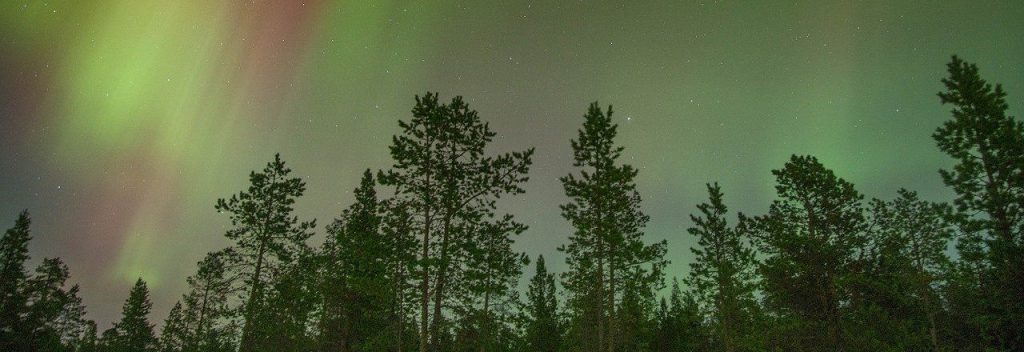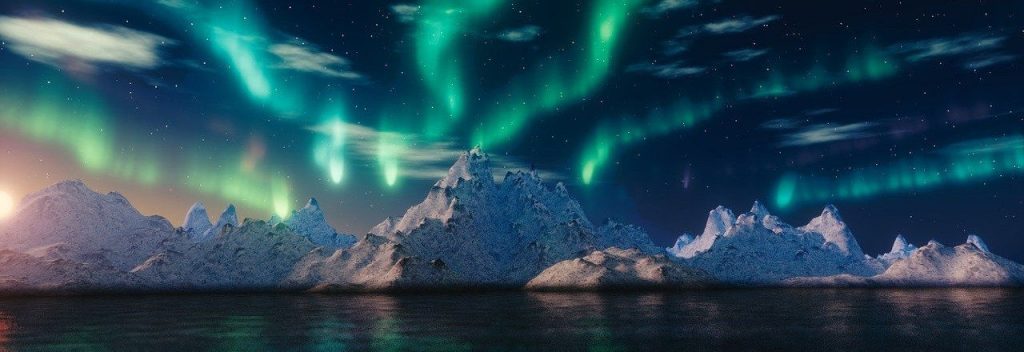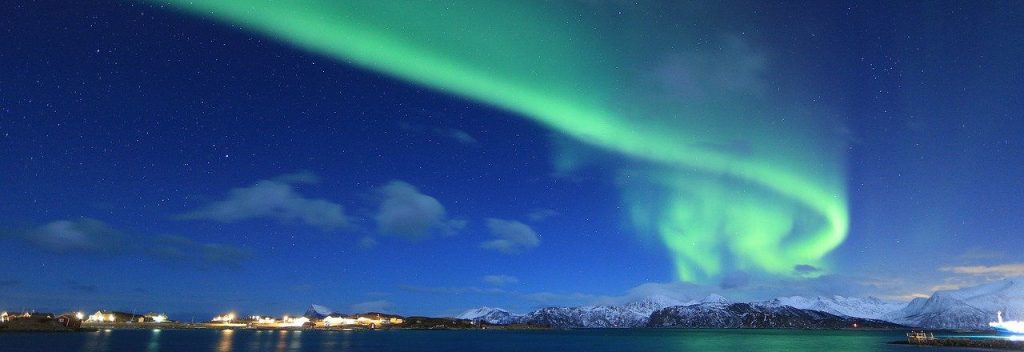Located in northwestern Montana, Glacier National Park is one of the most desired national parks in the United States, visited by travelers from around the world. The park spans over a million acres of land, including two subranges of the Rocky Mountains. The park boasts approximately 130 lakes, over 1,000 different plant species, and hundreds of animals and bird species. The park’s iconic mountain goat is symbolic to the area.
The enriched flora and fauna, diverse eco-system, spectacular lakes, lush forests, abundant hiking trails through and around rugged mountain terrain, are all part of what attracts millions of visitors each year. However, there is another experience seen in the park reserved only for the lucky ones: Aurora Borealis. Many people head to the northern-most regions of Alaska, Canada, Finland, or Iceland, but surprisingly this spectacular natural phenomenon can reveal itself in Big Sky, Montana.
What is Aurora Borealis?
The bright dancing lights of Aurora are collisions between electrically charged particles that enter the earth’s atmosphere from the sun. The lights can be seen in the sky between magnetic poles of the northern and southern hemispheres. These polar lights are known as ‘Aurora Borealis’ in the north and ‘Aurora australis’ in the south. Aurora borealis is more prevalent in comparison due to its cultural significance.
Aurora lights can appear in many colors. The most common of the colors are pale green and pink. Apart from that, shades of red, yellow, green, blue, and violet have also been seen and pictured. The lights display in many forms, from scattered clouds of light to arcs, steamers, shooting rays, or rippling curtains that light up the sky with a spooky glow. The northern lights create an illusion of going from south to north like a call of the unknown and have dazzled human minds for centuries.
‘Aurora Borealis’ means ‘dawn of the north,’ which has many myths and legends surrounding it. In Roman myths, Aurora was known as the goddess of dawn. In other cultures, auroral displays were considered harbingers of war or famine. Some aboriginal culture believed that the aurora lights were spirits of their ancestors.

When Can You See the Northern Lights?
The auroral activity is cyclic, according to most recent discoveries. The lights peak approximately every 11 years. The last peak was in 2013, meaning the next peak will occur around 2024.
Winter in the north is generally the best season to view the lights. The months-long darkness in the arctic circle combined with an often-clear sky increases the chance to see auroral displays. Typically, local midnight is the best time of the night (on clear nights) to watch for auroral shows. However, when you are sure to catch a glimpse of Aurora lights, the exact time and season are somewhat unpredictable. Observing the K-index raises the probability of viewing the northern lights, the more you head towards the south, the higher the K-index will need to be. You can check the Aurora Forecast to find the best time to see northern lights from your viewing point.

When Can You See the Northern Lights in Glacier National Park?
Glacier National Park offers some great viewpoints to watch the spectacular northern lights. Prime time to catch the spectacular light show is in the spring when the nights are longer and darker compared to summer. From September to April, when it is winter/spring in the northern hemisphere, the sky is also more transparent, making it ideal to see the lights of the north.
Northern lights generate in the north and often light up southward to Glacier National Park. Although the light show is not as distinguishable in this region as in Alaska or Iceland, it is still a beautiful sight. The most satisfactory time to see the northern lights in Big Sky, Montana is when the K-Index is high., “The K-index (Kp) is a measurement of the relative fluctuation in earth’s geomagnetic fields. The higher the K-index (on a scale of 0 to 9), the better your chances of viewing the northern lights and seeing them at lower latitudes. For regions of Montana south of I-90, a Kp of 7 or higher is generally required to see the northern lights,” according to FWP.MT.gov.

Best Spots to Watch Northern Lights in Glacier National Park
After choosing the right time and the right season to see the northern light, selecting the perfect spot in the Glacier National Park is equally important. The ideal place should have an open view of the north and away from any light pollution – away from crowded areas likely to use artificial lighting and into the remote regions of the park.
Some places where you can settle in and enjoy the magical light show are mentioned below.
LAKE MCDONALD
The shores of Lake McDonald are ideal for watching the northern lights; it has a clear view of the north with the added feature of seeing a reflection of the lights in the clear, serene water of the tranquil lake. Situated just a few miles away from the West Glacier park entrance, the lake offers daytime activities such as kayaking and paddle-boarding.
LOOKING GLASS ROAD (HWY 49)
This spot is only open in the summer; however, this secluded gem provides an excellent lookout for the northern lights. It runs 10 miles north from East Glacier Village to Highway 89 in Kiowa. You may encounter wildlife around this area at night, so extra caution is advised. There are several lookouts along the road perfect for aurora viewing.
BISON PADDOCK LOOP, WATERTON LAKES NATIONAL PARK
The Waterton-Glacier International Peace Park connects Glacier and Canada’s Waterton Lakes National Park. The wide-open space of Bison Paddock Loop, free from light pollution, is a great spot to experience the Aurora borealis when available.
BOWMAN & KINTLA LAKES
The more you head towards the origin of northern lights, the better the chances of seeing it. Bowman and Kintla lakes are the perfect off-the-beaten-track destination for nature’s light show. The lakes are located close to another popular viewing spot, Polebridge. Situated deep in the Flathead County’s North Fork region where you can set up camp in the backcountry and enjoy the spectacular light show from your tent.
NORTHERN LIGHTS SALOON & CAFÉ
Northern lights saloon and café is the least remote viewing spot for the Aurora borealis show, located in the Flathead community of Polebridge. Take in some live music while you enjoy the northern lights – a less crowded and cozier experience makes this café is the perfect spot.
Our planet is filled with wonders and magical phenomenon – endless sights to explore and limitless marvels to discover, including the Northern Lights as one of the most surreal. Seeing Aurora lights requires both passion and patience, but once you experience them, they’re something you’ll never forget.

